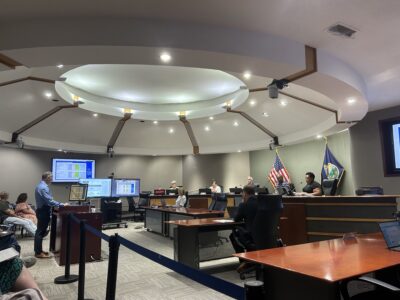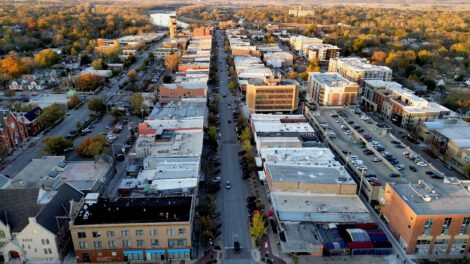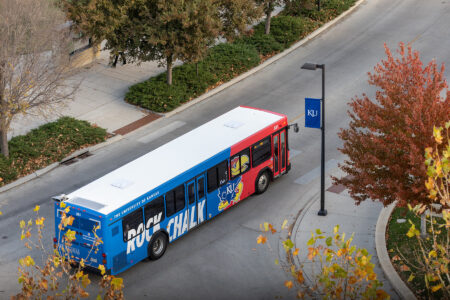Stuffed celebrity’s move a painstaking KU affair
Fears of disintegration accompany relocation of Little Bighorn survivor
Brad Kemp has been losing sleep the past few months, hoping he doesn’t beat up a dead horse.
Kemp is helping devise a plan to move Comanche down a story to a new exhibit space.
The stuffed warhorse is, of course, an icon of the nation’s Western expansion, one of the most beloved artifacts at the Kansas University Natural History Museum and the most famous survivor of the Battle of the Little Bighorn, also known as Custer’s Last Stand.
Kemp’s dilemma: A horse dead 114 years can’t exactly trot down a flight of stairs and nobody wants chunks of horse hide flying off what is perhaps taxidermy’s biggest celebrity.
“I have nightmares that it just turns to a pile of dust when we move it,” said Kemp, the museum’s assistant director.
Comanche has been a fixture at the Natural History Museum since 1891, when the horse died and was preserved for the museum’s collection.
The horse gained fame as the only representative of the U.S. Army found alive when reinforcements arrived too late at the Battle of Little Bighorn in 1876. Comanche, the horse of Capt. Myles Keogh, was badly wounded but nursed back to health. He spent the remainder of his life performing ceremonial duties. He was stabled for several years at Fort Riley near Junction City.
Comanche was moved into the current exhibit space, on the fifth floor of the museum, in the late 1950s.

Bruce Scherting, exhibits director at Kansas University's Natural History Museum, measures Comanche, the horse that survived Custer's Last Stand. The famous stuffed horse, which has called the museum home for more than a century, is being moved to a new location, a project that worries museum officials because of the horse's fragility.
New digs
Now, museum officials are hoping to turn the entire fifth floor into a space for traveling exhibits, and Comanche’s age makes the 1950s storage chamber inadequate for preserving the horse’s hide.
So sometime this spring, they’re planning to move Comanche to the fourth floor, adjacent to the museum’s entrance, to a modern exhibit case that will do more to control humidity and temperature, as well as provide fiberoptic lights less harsh on the horse’s body than the current fluorescent lights.
The new space also will have new photos and information about Comanche’s life story, as well as a video presentation on the horse.
“In many ways, this is going to be a much better space for him,” Kemp said. “It’s closer to the lobby, and he’ll have a space of his own. He will no longer have to share space with dinosaurs.”
‘Good shape’
 Interview with Bruce Scherting, exhibits director at Kansas University’s Natural History Museum: Interview with Bruce Scherting, exhibits director at Kansas University’s Natural History Museum: |
Museum workers started the moving process by assessing Comanche’s current taxidermic health.
Bruce Scherting, exhibits director, said a few of the seams in the horse hide were delicate and needed repair. Others have become more easily seen over time, and better lighting will make the needed repairs even more apparent.
Also, the horse hide — which is wrapped around a frame of original bones, wood, clay and steel — is thin, which makes it susceptible to further damage.
KU plans to hire a taxidermist to complete the repairs in a temporary work area this spring. A window will allow museum visitors to watch the work being completed.

Brad Kemp, left, assistant director of KU's Natural History Museum, and Bruce Scherting, exhibits director, look over a model of Comanche. The model was built to make sure the real Comanche can be safely navigated through the building to his new exhibit space.
Everything considered, Scherting said, the horse is in good shape to make the trip downstairs.
“It’s doing OK,” he said. “It’s been around a long time, but there’s nothing really too concerning. It’s in pretty good shape for the age.”
Moving plans
After the initial condition report was complete, Scherting began focusing on how to move the horse downstairs.
A student assistant completed a life-sized Comanche mockup of foam board to make sure the horse could negotiate the turns in the Dyche Hall hallways. The horse is 8 feet 4 inches long, 6 feet 5 inches high and 2 feet wide. It weighs between 200 and 300 pounds.
Plans call for a platform with casters to be built to roll Comanche through the hallway to a freight elevator. A system of braces will be constructed to keep the horse from shimmying too much during the ride.

Officials at Kansas University's Natural History Museum are preparing a new exhibit space for Comanche, the horse that survived Custer's Last Stand. The new space also will have new photos and information about Comanche's life story, as well as a video presentation on the horse.
“It was quite a relief we could actually keep him inside the building,” Kemp said. “We thought we were going to have to roll him outside and bring him back in.”
No definite time frame has been set for the horse’s migration, but it should occur sometime this spring. Scherting said people continued to come to the museum to see the horse, even though Comanche is off exhibit during preparations for the move. Many, he said, are history buffs who want to learn more about the Battle of Little Bighorn.
“It’s amazing how many people stop by just to see the horse,” he said. “I think it’ll be a big improvement for it.”
| Born: 1862; died: 1891.Breed: Buckskin gelding.Name background: According to popular story, was injured with an arrow in a skirmish with Comanches in 1868 and a soldier said the horse screamed like a Comanche. Was then named “Comanche” by the horse’s rider, Capt. Myles Keogh.Career highlights: Purchased by U.S. 7th Cavalry in 1868; wounded in Battle of Little Bighorn in 1876, and was the only survivor of the battle recovered by the Army; stationed at Fort Riley beginning in 1888.Posthumous fame: Preserved by Lewis Lindsay Dyche, famous Kansas University taxidermist; appeared in the 1893 World’s Columbian Exposition in Chicago.Common misconceptions: Wasn’t the only U.S. Army survivor of the Battle of Little Bighorn (Other Army horses were taken by tribal warriors after the battle.), and wasn’t Gen. George Custer’s horse. |







